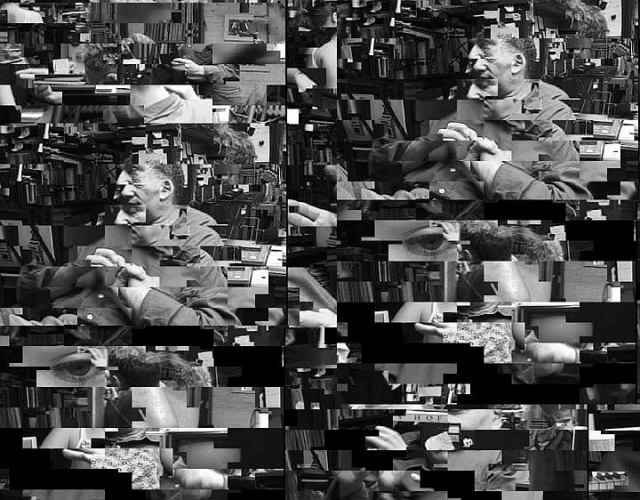Henry Hills
Experimental Filmmaker

► preview Nervous Ken on Vimeo
In Nervous Ken, experimental film legend and long-time Tribeca resident Ken Jacobs is “interviewed” by an urbane 12-year old from the Upper West Side, Emma Bernstein. Envisioning an exploration of the nature of listening (of apprehending or not, remembering or not, & creating meaning) and of the repetitions & variations of verbal expression and its accompanying often-emphatic physical gesturing as a basis for making visual music, Henry Hills employs the full range of temporal manipulation available within the digital realm, exploiting the unique corners which differentiate DV from 16mm, though including frequent references to themes & techniques from Jacobs’ own work within the arcanum of film. The “musical score” is derived through permutations of the sync track. This is the first released section from the ongoing series, EMMA’S DILEMMA, which follows its protagonist through numerous encounters with a range of artists in a search for identity spanning her entire teen years.
I think of my work as residing within, if there is such a thing, the genre of perceptual studies. Believing such modeling to be more developed in music & writing, my major peer stimulation has come from improvised music & “language” poetry. My field-structured 80’s films (Kino Da!, Radio Adios, Money), which force an active attentiveness through extremely condensed, relentlessly focused montage, explore ways speech is perceived--fragments completed in the mind, physical gestures & meaningful pauses substituting for words. Emma’s Dilemma is a renewal & extension of that impulse with an intensive rather than extensive editorial approach. Working digitally, I try to use new tools in new ways, often subverting intentions of the engineers: altering speed, direction, orientation, density, color balance; employing repetition with or without variation. Complex cuts are made into single objects which can then be manipulated. I am especially interested in improvisation. Shooting is almost always improvisatory, gathering interesting possibilities for montage. My editing strategy is to immediately overcome profilmic illusions; I begin by putting the shots in reverse order, decontextualizing them to identify fragments with defining charisma to then juxtapose & refine. Finally, though, the internal spirit of the composition takes control and leads me where it will.